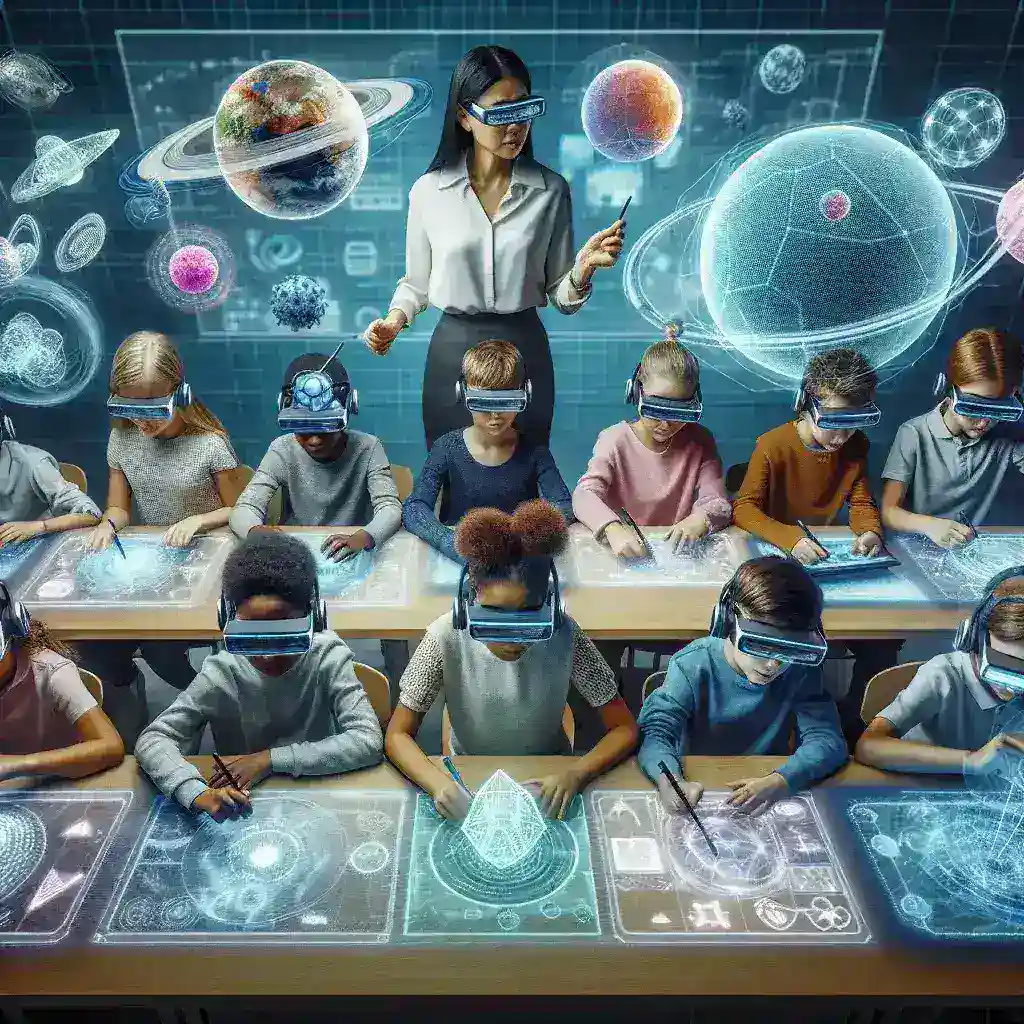The Future of Augmented Reality in Education: Transforming Learning Experiences
The Growing Impact of Augmented Reality in Education
Augmented reality (AR) has emerged as a powerful technology with the potential to transform the way we learn and engage with information. By overlaying digital content onto the real world, AR creates a unique, interactive learning experience that captivates students and enhances their understanding.
AR bridges the gap between the physical and digital worlds, providing learners with immersive, hands-on experiences that foster critical thinking, problem-solving, and creativity. It brings abstract concepts to life, enabling students to visualize complex ideas in a tangible way.
Enhancing Learning Experiences
One of the key benefits of AR in education is its ability to enhance the learning experience. Traditional teaching methods often rely on textbooks and lectures, which can be dry and passive. AR, on the other hand, transforms learning into an active, engaging process.
With AR, students can explore virtual environments, interact with 3D models, and manipulate objects in real-time. For example, in a biology class, students can use AR to examine virtual organs and see how they function. In a history class, they can walk through ancient ruins using AR simulations.
AR also caters to different learning styles, making education more inclusive. Visual learners can benefit from the enhanced visuals, kinesthetic learners can engage with hands-on activities, and auditory learners can listen to audio cues through AR devices.
Improving Retention and Understanding
AR has been shown to improve retention and understanding among students. The immersive nature of AR experiences provides a multisensory learning environment that stimulates memory recall and enhances comprehension.
When students have the opportunity to interact with virtual objects and environments, they are more likely to remember the information. AR also allows for personalized learning experiences, where students can progress at their own pace and receive real-time feedback and guidance.
Preparing Students for the Future
The future job market will heavily rely on technology and innovation. By incorporating AR into education, we are equipping students with the skills they need to thrive in a rapidly changing world.
AR enhances critical thinking and problem-solving abilities, as students are encouraged to approach learning in a more hands-on and exploratory manner. It also fosters collaboration and teamwork, as students can work together on AR projects and share knowledge.
Moreover, AR can provide valuable career-related experiences. For example, medical students can practice surgeries through AR simulations, architecture students can design buildings in augmented reality, and language learners can engage in immersive conversations with virtual language partners.
The Future is Augmented
The potential of augmented reality in education is immense. As the technology continues to evolve, we can expect even more advanced AR applications that revolutionize teaching and learning.
However, for AR to reach its full potential in education, there are certain challenges that need to be addressed. These include the availability and affordability of AR devices, the development of high-quality educational content, and the training of educators to effectively integrate AR into their teaching practices.
Despite these challenges, the future of augmented reality in education is bright. By harnessing the power of AR, we can create transformative learning experiences that empower students, foster creativity, and prepare them for the jobs of tomorrow.

